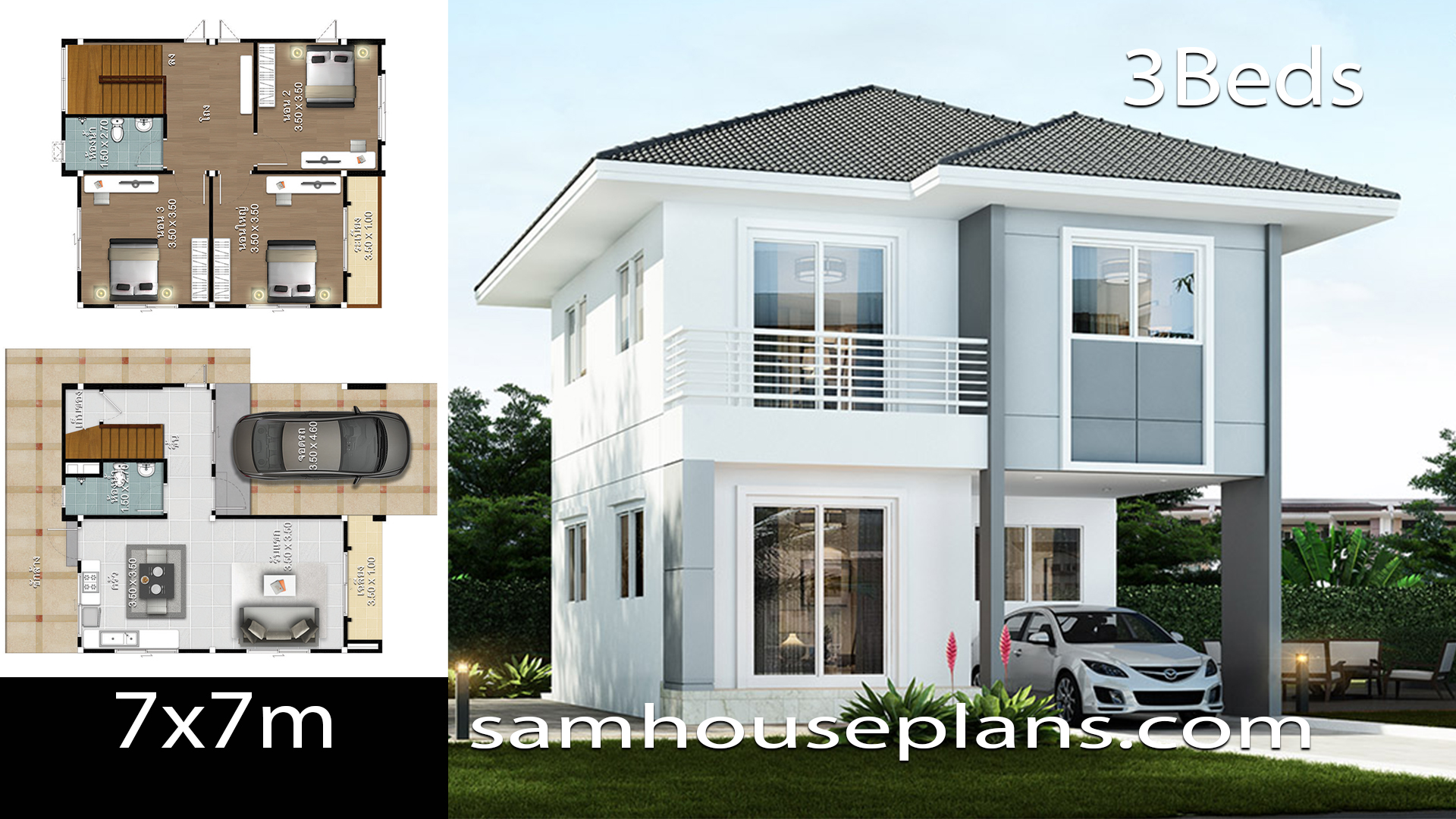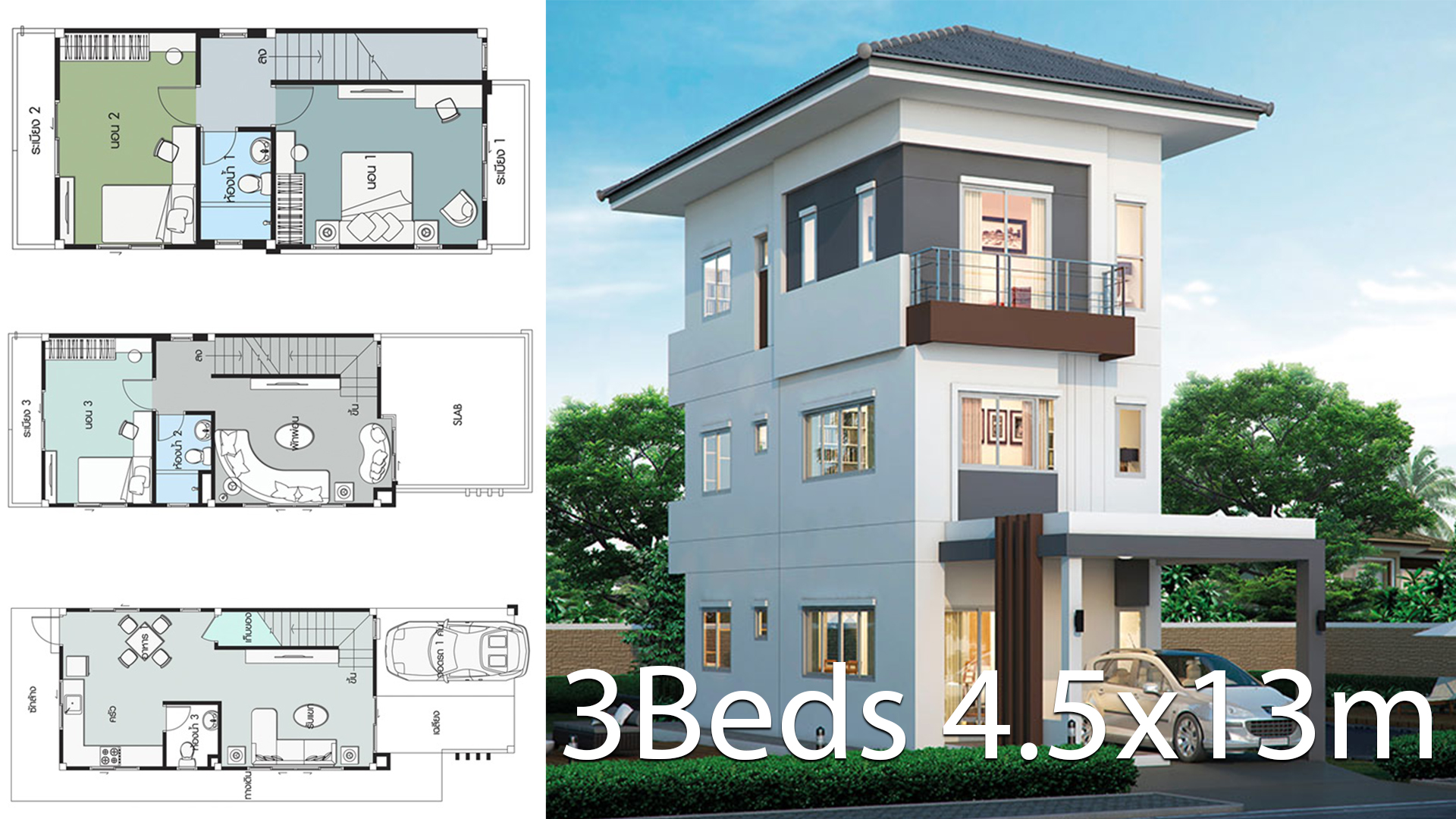Understanding Three-Bedroom Bungalow Floor Plans

Bungalows are a popular choice for homeowners seeking a single-story living experience, known for their simplicity and charm. This style of home, typically characterized by a low-pitched roof and a modest footprint, offers a unique blend of functionality and aesthetic appeal.
Different Bungalow Styles
Bungalow styles have evolved over the years, resulting in diverse architectural expressions. Each style carries distinct characteristics that contribute to its unique identity.
- The Craftsman bungalow, popularized in the early 20th century, embodies simplicity and functionality. It often features a low-pitched roof with wide eaves, exposed beams, and a welcoming front porch. This style emphasizes natural materials, such as wood and stone, and prioritizes craftsmanship.
- Prairie bungalows, inspired by the work of architect Frank Lloyd Wright, emphasize horizontal lines and a connection to nature. These homes often feature large windows, low-pitched roofs, and a focus on open floor plans. They often incorporate natural materials like wood and brick, creating a sense of warmth and simplicity.
- Spanish Colonial bungalows, influenced by Spanish and Mexican architecture, exhibit distinctive features such as red tile roofs, stucco walls, and arched doorways. They often incorporate courtyards and patios, creating a sense of privacy and outdoor living.
Advantages and Disadvantages of a Three-Bedroom Bungalow Layout
Three-bedroom bungalows offer a balance of space and functionality, making them suitable for families and individuals alike.
- One of the primary advantages of a three-bedroom bungalow is its single-story design. This eliminates the need for stairs, making it easier to navigate and ideal for individuals with mobility limitations. The single-story design also allows for easier access to all areas of the home, promoting accessibility and convenience.
- Another advantage is the efficient use of space. Bungalow layouts often prioritize functionality, maximizing living space within a smaller footprint. This can be particularly beneficial for families looking to make the most of their living area.
- However, it is important to consider potential disadvantages. One limitation is the potential lack of privacy, especially in smaller bungalows. The open floor plan, while promoting a sense of community, can also limit privacy between rooms. This can be a consideration for families with teenagers or individuals who value personal space.
- Another disadvantage is the limited potential for expansion. Since bungalows are typically single-story structures, adding additional space can be challenging and costly. This may not be ideal for families who anticipate future growth or require more living space.
Designing a Functional Three-Bedroom Bungalow Floor Plan: Three Bedroom Bungalow Floor Plan

Creating a functional floor plan for a three-bedroom bungalow involves careful consideration of space allocation, traffic flow, and individual needs. The goal is to maximize usability and comfort within the confines of a single-story dwelling.
Basic Floor Plan Template
A basic floor plan template for a three-bedroom bungalow typically includes the following essential rooms:
- Living Room: This is the central gathering space, often located at the front of the bungalow.
- Kitchen: Typically positioned near the dining area or living room, facilitating easy access for serving meals.
- Bedrooms: Three bedrooms are allocated, each providing privacy and a comfortable sleeping space.
- Bathrooms: At least one full bathroom is included, with the option for a second bathroom depending on the size and layout.
Bedroom Layout Options
The layout of bedrooms in a bungalow can significantly impact privacy, accessibility, and natural light. Here are some common options:
- Clustered Bedrooms: This layout groups the bedrooms together, creating a sense of intimacy and shared space. This is ideal for families with young children.
- Spread-out Bedrooms: This layout positions the bedrooms at opposite ends of the bungalow, maximizing privacy and minimizing noise disruption. This is suitable for larger families or those seeking greater separation.
- Master Suite: Incorporating a master suite with an ensuite bathroom and walk-in closet provides a luxurious and private retreat within the bungalow.
Storage and Laundry Space Allocation
Efficiently allocating space for storage and laundry is crucial in a bungalow. Here are some design considerations:
- Dedicated Storage Areas: Designating specific areas for storage, such as closets, built-in cabinets, or a dedicated storage room, helps maintain a clutter-free environment.
- Laundry Room: Including a dedicated laundry room with space for a washer, dryer, and storage shelves is a practical solution. Alternatively, incorporating a laundry area within a bathroom or closet can save space.
Key Considerations for Three-Bedroom Bungalow Floor Plans

Creating a functional and aesthetically pleasing three-bedroom bungalow floor plan requires careful consideration of various factors that contribute to its overall livability and appeal. This section delves into key considerations that play a crucial role in designing a successful bungalow layout.
Traffic Flow
Traffic flow within a bungalow is paramount to ensure smooth and efficient movement between rooms. Poorly planned traffic flow can lead to congestion, inconvenience, and a sense of crampedness. Here are key tips to optimize traffic flow:
- Centralized Hallway: A well-placed hallway acts as a central artery, connecting major rooms and minimizing the need to traverse through other spaces.
- Open Floor Plans: Open floor plans seamlessly blend living areas, promoting a sense of spaciousness and easy movement between spaces.
- Strategic Door Placement: Carefully positioning doors to avoid blocking pathways and ensure ample space for maneuvering is essential.
- Wide Hallways: Spacious hallways allow for comfortable movement, especially for furniture transport or when multiple people are navigating the space.
Maximizing Natural Light, Three bedroom bungalow floor plan
Natural light is a crucial element in enhancing the ambiance and functionality of a bungalow. Single-story dwellings can be susceptible to limited natural light, making it essential to maximize its penetration.
- Large Windows: Incorporating large windows strategically throughout the bungalow allows for maximum natural light influx. Large windows, especially in living areas, create a sense of openness and connection to the outdoors.
- Skylights: Skylights provide an excellent source of natural light, particularly for rooms with limited wall space for windows. Skylights can dramatically brighten interiors, especially in kitchens, bathrooms, or hallways.
- Light-Colored Walls and Flooring: Light colors reflect natural light, creating a brighter and more spacious feel. This approach is particularly effective in smaller bungalows where maximizing natural light is crucial.
Exterior Design
The exterior design of a bungalow plays a vital role in complementing the interior layout and enhancing the overall curb appeal. A well-designed exterior seamlessly integrates with the interior, creating a cohesive and aesthetically pleasing living environment.
- Porches and Patios: Porches and patios offer extensions of the living space, providing outdoor areas for relaxation, dining, or entertaining. Their design should complement the bungalow’s style and provide a smooth transition between indoor and outdoor spaces.
- Landscaping: Strategic landscaping enhances the bungalow’s curb appeal and creates a harmonious connection between the structure and its surroundings. Well-maintained lawns, flower beds, and trees add visual interest and create a welcoming atmosphere.
- Roofline and Facade: The bungalow’s roofline and facade should be thoughtfully designed to create visual appeal and complement the overall architectural style. The use of materials like stone, wood, or brick can enhance the bungalow’s character and create a distinct aesthetic.